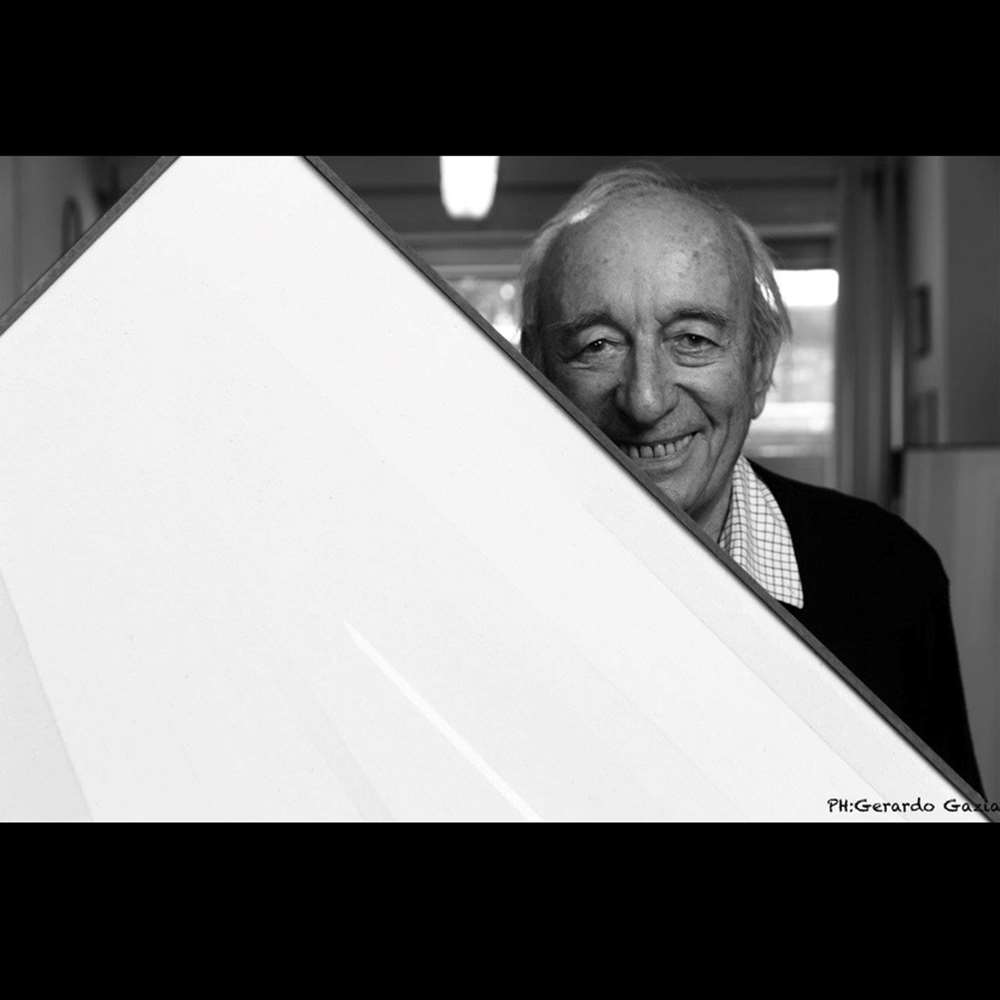-
Interview
1. What are the foundations of your research (Art Identity)?
The foundations of my research are: light, the lightness of color and the tension that the work must produce in its meditated reading.
2. Who are the artists who have guided you in your research?
The guiding artists are, at the beginning, numerous, because there are so many artists who preceded me and whom I admired… I will mention Paul Klee among the first, then with the informal Wols and Rembrandt of the last self-portraits (lights and shadows). Then in the early sixties I eliminated shadows and dark colors to highlight the light and its poetic effects, but above all I searched within myself and created almost invisible and difficult to read paintings.
3. Define yourself as a human being using three adjectives.
I can not answer
4. According to your vision, where is contemporary art going and where would you like it to go?
Art is unpredictable, it cannot be reached rationally. I never imagined when I started out, sixty years ago, that much of today's artistic making would be achieved with very expensive and spectacular installations that sometimes remind us of details from Luna Park.
But then who knows, will there be a return to a new Humanism? Perhaps, because in art everything repeats itself, but is continually renewed, keeping traces of our historic past.
TWO WORDS ABOUT HIS WORKS
Riccardo Guarneri is a painter who belongs to the large dimension of the sign and is recognized as a master of colour. He participated in two Venice Biennales, in 1966 and 2017 and in the Paris Biennale in 1967. Observing his works, one notices how those that at first impact, the eye recognizes as geometric shapes, in reality tend to cancel each other out, transforming in pure luminous transparencies, in barely visible chromatic traces and signs. Works defined as "slow consumption" by the same author. Able to "capture the air, the oxygen". We are in front of a landscape of the soul, where each of us will recognize himself in a different nuance. The delicate figures always move away from the center of the frame, to move towards the margins, up to and including coming out of it. The works of the 2000s have more lively and vivid colors than the works of the 60s-70s which instead reveal the love that the artist feels towards the Nordic countries and the cold, earthy and gray colors. His constant search for light and its variations goes hand in hand with the strong musicality present in his works. In fact, Guarneri starts from music and then approaches art. Today his works can be found in prestigious collections and in museums such as the Center Pompidou in Paris and the Museo del Novecento in Milan.
He begins to paint in 1953. His first studies on the abstract are placed in the informal area. His first one-man show was in The Hague in 1960. In 1962 he began to take an interest in color as light, handwriting as painting and problems inherent in visual perception. The first very clear paintings are born in which the space is marked by luminous variations and whose surfaces are mainly treated in pencil. These paintings were exhibited for the first time in 1963 in the solo show at "La Strozzina" in Palazzo Strozzi. From 1964/65 onwards, Guarneri's work acquired a more rigorous and geometric structure. He is co-founder of the Tempo 3 group which proposed itself as the third tempo of abstract painting after geometric abstractionism and the informal. His works are placed in the fields of aniconic and analytical painting.





